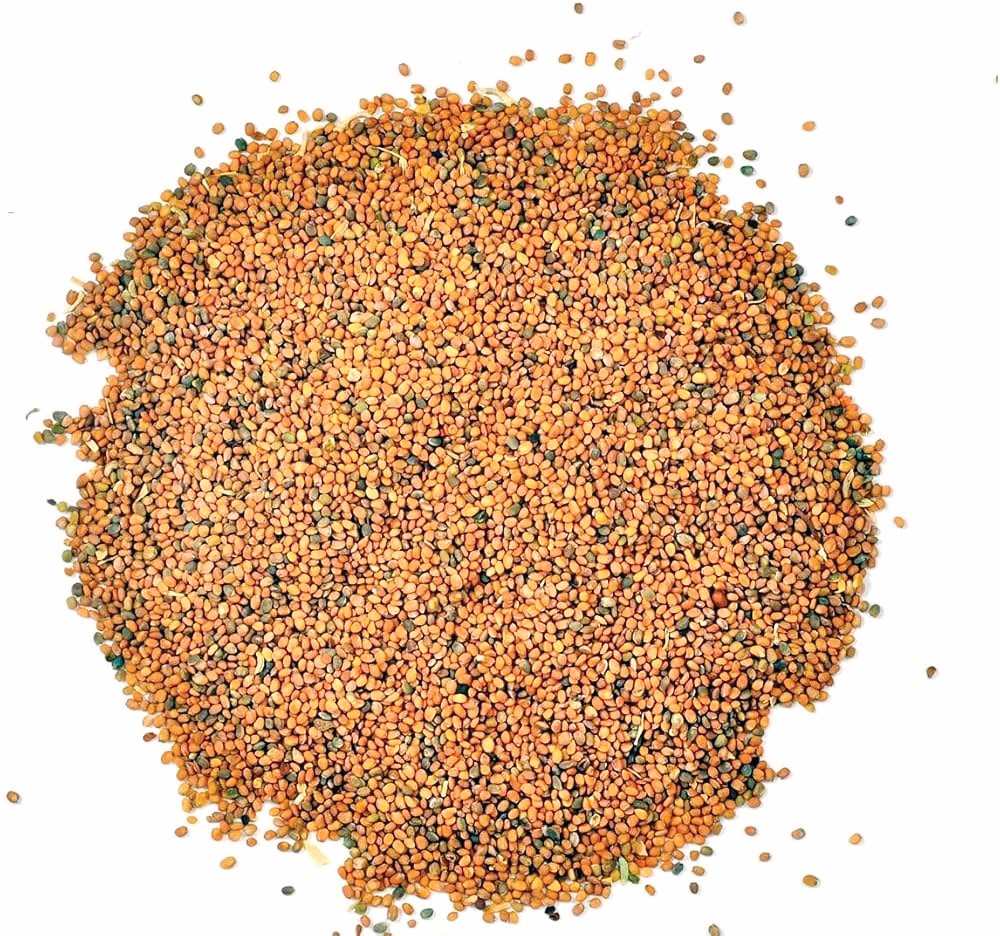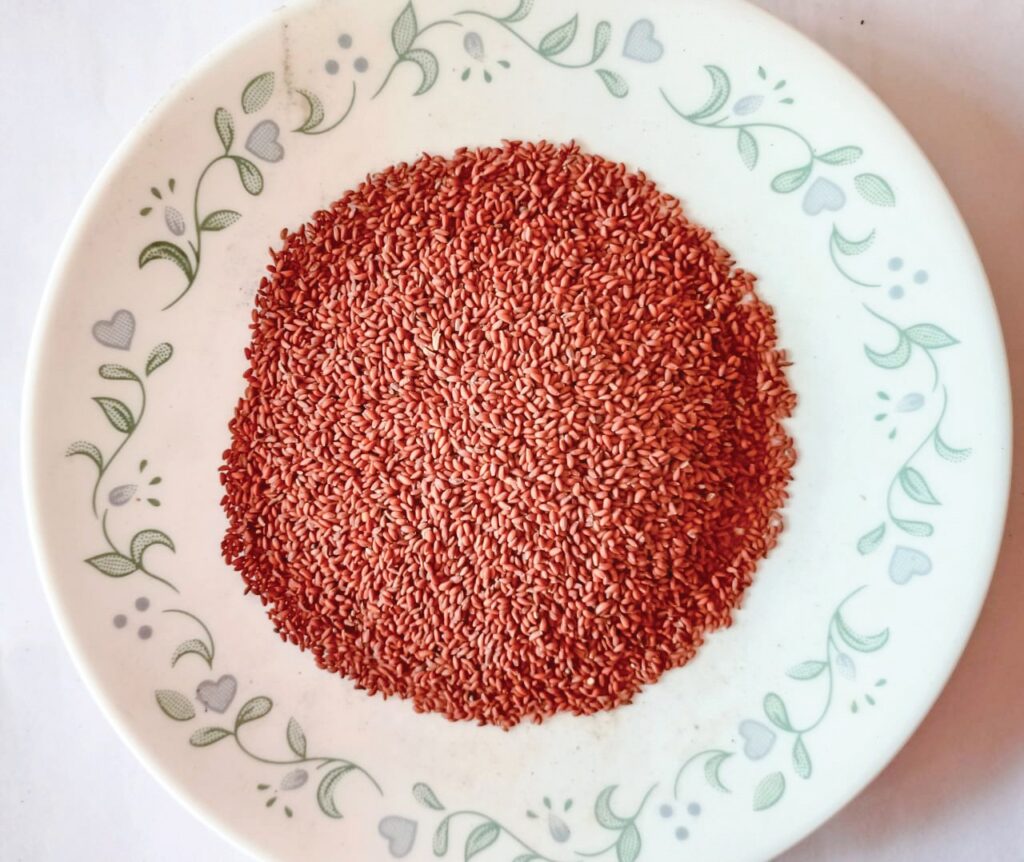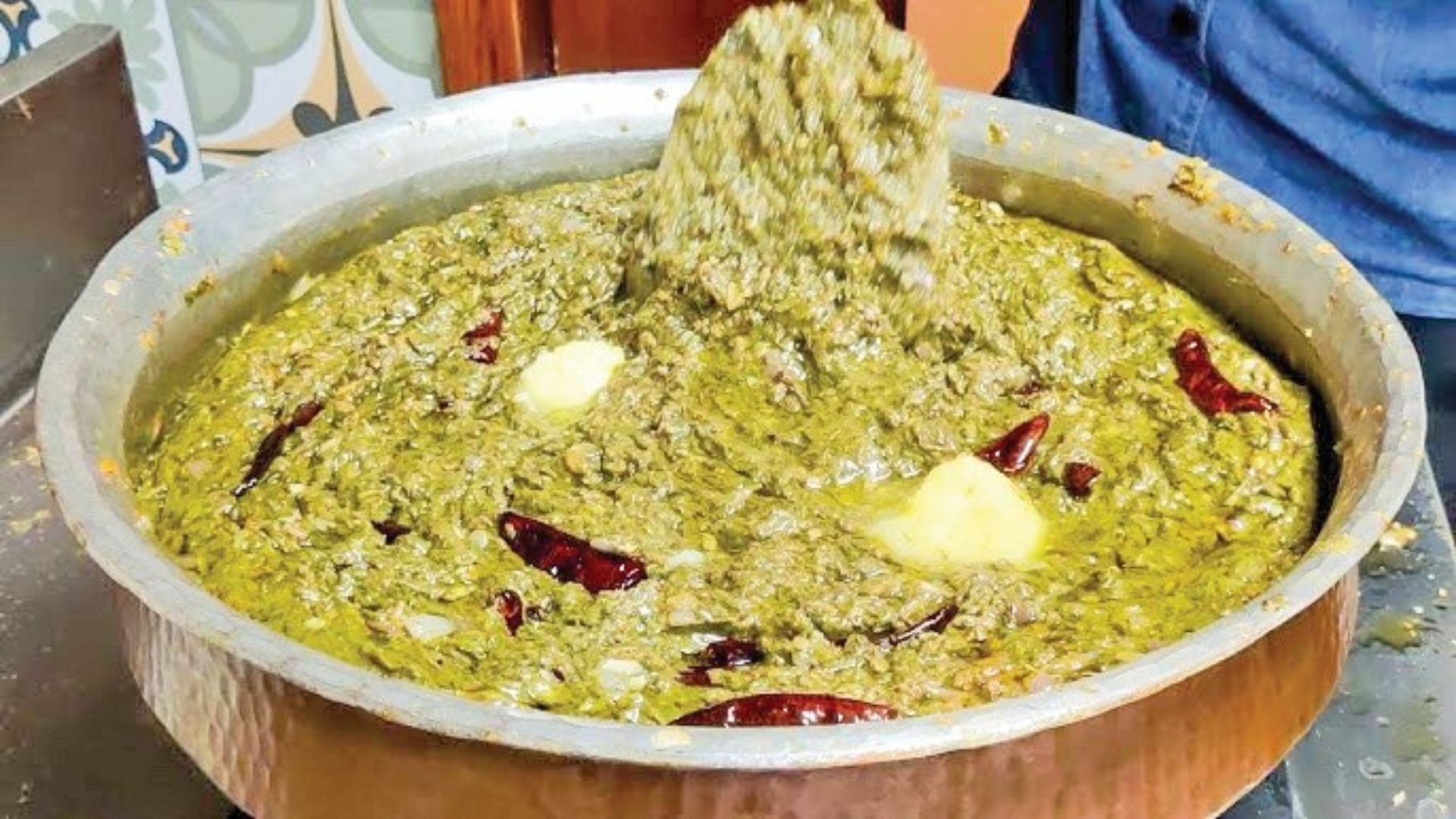Rajasthan stands as the primary growing region for taramira in India, with major production occurring across several districts. The arid landscape and harsh climate of the state provide an ideal environment for this resilient crop. Districts such as Jaipur, Tonk, Sawai Madhopur, Sri Ganganagar, Bhilwara, and Dausa have emerged as the leading producers of taramira.
Among these, the Jaipur district takes the lead in production, cultivating taramira on an impressive 15,670 hectares of land. This extensive cultivation results in an annual yield of 10,032 metric tons, showcasing the crop’s importance to the local agricultural economy. The success of taramira cultivation in Jaipur has inspired other districts to increase their production, contributing to the overall growth of the crop in the state.
When we look at the bigger picture, Rajasthan as a whole dedicates a substantial 54,315 hectares to taramira cultivation. This extensive farmland produces a staggering 37,877 tons of taramira each year, with an impressive yield of 697 kg per hectare. These numbers not only highlight the crop’s significance in the state’s agricultural portfolio but also underscore its adaptability to the region’s challenging growing conditions.
Perfect for Rajasthan’s Climate
The success of taramira in Rajasthan can be attributed to its remarkable ability to thrive in arid and semi-arid conditions. This makes it perfectly suited to Rajasthan’s climate, characterized by low rainfall, high temperatures, and prolonged dry spells. The crop’s adaptability to these harsh conditions has made it a favorite among local farmers who struggle with water scarcity and unpredictable weather patterns.
Taramira is primarily grown as a rabi (winter) crop in Rajasthan. The sowing season typically begins in October and extends into November, coinciding with the cooler temperatures that follow the monsoon season. The crop then grows through the winter months, benefiting from the milder temperatures and occasional winter rains. Harvest time arrives in February and March, just as the weather begins to warm up again.
One of the most remarkable features of taramira is its low water requirements. In a state where water is a precious commodity, this characteristic makes taramira an invaluable crop. Its drought resistance allows it to survive and thrive in areas where other crops might fail, making it an excellent choice for Rajasthan’s water-scarce regions. This adaptability not only ensures a stable yield for farmers but also contributes to the sustainable use of the state’s limited water resources.

Benefits of Taramira Cultivation
The cultivation of taramira brings a multitude of benefits to Rajasthan’s agricultural landscape, extending far beyond its culinary uses. Let’s delve deeper into these advantages:
1. Soil Improvement: Taramira plays a crucial role in soil conservation. Its deep root system penetrates the soil, helping to prevent erosion by binding the soil particles together. This is particularly important in Rajasthan, where wind erosion is a significant concern due to the arid climate. As the roots grow and decay, they also add organic matter to the soil, improving its structure and fertility over time.
2. Ideal for Crop Rotation: Farmers in Rajasthan have long recognized the value of taramira in crop rotation systems. As a member of the Brassicaceae family, taramira offers a break from cereals and legumes commonly grown in the region. This rotation helps disrupt pest and disease cycles, reducing the need for chemical interventions. Moreover, taramira’s ability to fix atmospheric nitrogen enhances soil fertility, benefiting subsequent crops in the rotation.
3. Low Input Requirements: In an era where sustainable agriculture is gaining importance, taramira stands out for its minimal input requirements. Its natural drought tolerance means it needs very little irrigation, a significant advantage in water-scarce Rajasthan. Additionally, the plant has inherent pest-resistant properties, reducing the need for chemical pesticides. This not only lowers production costs for farmers but also promotes environmentally friendly farming practices.
4. Soil Fertility Enhancement: One of the most significant benefits of taramira cultivation is its positive impact on soil fertility. After the oil is extracted from the seeds, the remaining oil cake serves as an excellent organic fertilizer. When applied to fields, this oil cake improves the soil’s physical condition by enhancing its water-holding capacity and aeration. It also adds essential nutrients back to the soil, reducing the need for synthetic fertilizers in subsequent crops.
5. Nutritional Value: Beyond its agricultural benefits, taramira offers significant nutritional value. The seed oil is rich in essential nutrients, particularly potassium and Vitamin C. These nutrients not only contribute to human health when consumed but also make taramira an excellent feed for livestock. The nutritional profile of taramira adds to its overall value, making it a multifaceted crop that contributes to both agriculture and nutrition.

Medicinal and Nutritional Value
1. Traditional Medicine: Taramira has a long-standing place in the Unani system of medicine, one of the oldest forms of traditional medicine practiced in India. In this system, various preparations using taramira are used to treat a range of ailments. The seeds and oil are believed to have warming properties and are often used in formulations to treat respiratory conditions, rheumatism, and skin disorders. The oil is also traditionally applied externally to relieve muscle and joint pain.
2. Potential Diabetes Management: Recent scientific research has shed light on taramira’s potential role in managing diabetes. A study conducted on rats with induced diabetes mellitus showed promising results when treated with taramira oil. The research indicated that the oil helped reduce the effects of diabetes, potentially due to its high content of erucic acid and other bioactive compounds. While more research is needed to confirm these effects in humans, these findings open up exciting possibilities for taramira in the field of nutraceuticals and functional foods.
3. Nutritious Animal Feed: The oil cake left after extracting oil from taramira seeds is not just beneficial for soil fertility; it’s also an excellent animal feed. Rich in proteins and essential nutrients, this oil cake is particularly valued as cattle feed. Interestingly, farmers have long observed that cattle fed on taramira oil cake seem to be less susceptible to tick infestations. This natural pest-repelling property adds another layer of value to taramira cultivation, potentially reducing the need for chemical treatments in livestock management.
4. Human Nutrition: The oil extracted from taramira seeds is a powerhouse of nutrients.It’s particularly rich in omega-3 fatty acids, which are known for their anti-inflammatory properties and benefits for heart and brain health. The high vitamin C content in taramira oil contributes to its antioxidant properties, potentially helping to boost the immune system and protect cells from damage caused by free radicals.
5. Potential Cancer Fighting Properties: Preliminary studies have suggested that certain compounds found in taramira seeds may have anti-cancer properties. While this area requires much more research, it highlights the potential of this humble seed in future medical applications.
Delicious Dishes Made with Taramira
1. Upma: This popular South Indian breakfast dish gets a Rajasthani twist with the addition of taramira seeds. The seeds are lightly roasted and added to the semolina-based dish, imparting a nutty flavor and crunchy texture. The slight bitterness of taramira complements the mild flavor of upma, creating a balanced and satisfying meal.
2. Bagara Baingan: This classic Hyderabadi dish of stuffed eggplants is given a Rajasthani makeover with taramira. The seeds are ground into a paste along with other spices and used as a stuffing for the eggplants. The unique flavor of taramira adds depth to the dish, enhancing its overall taste profile.
3. Gajjar Kosambari: This refreshing carrot salad incorporates roasted and ground taramira seeds. The seeds add a crunchy texture and a slightly pungent flavor that pairs well with the sweetness of carrots. It’s a perfect example of how taramira can elevate even the simplest of dishes.
4. Tomato and Taramira Seed Pickle: Pickling is an art form in Rajasthan, and taramira seeds play a starring role in many pickle recipes. In this particular pickle, the seeds are dry roasted and mixed with chopped tomatoes, spices, and oil. The result is a tangy, spicy, and slightly bitter pickle that’s a perfect accompaniment to Rajasthani meals.
5. Quick Pickled Amba: This quick pickle features raw mango (amba) and taramira seeds. The seeds are lightly crushed and mixed with chopped raw mango, salt, and spices. The pickle is ready to eat in just a few hours, offering a burst of flavors that range from sour to spicy to slightly bitter.
6. Taramira ki Chutney: This spicy chutney is a staple in many Rajasthani households. Roasted taramira seeds are ground with garlic, red chilies, and salt to create a pungent and flavorful condiment that pairs well with almost any dish.
7. Taramira Raita: In this cooling side dish, roasted and ground taramira seeds are mixed into yogurt along with chopped cucumber and mint. The nutty flavor of the seeds adds an interesting dimension to the creamy raita.
8. Taramira Paratha: These flatbreads are stuffed with a mixture of ground taramira seeds, spices, and sometimes mashed potatoes. The stuffing gives the paratha a unique flavor and makes it a hearty meal in itself.
9. Taramira Kadhi: This yogurt-based curry incorporates roasted and ground taramira seeds into its spice mix. The seeds add a depth of flavor to the tangy kadhi, making it a perfect accompaniment to rice or roti.
How Taramira Seeds Enhance the Dishes
The unique properties of taramira seeds make them a versatile ingredient in Rajasthani cuisine. Here’s how they enhance various dishes:
Oil Use: Taramira oil has a strong, pungent flavor that’s considered too intense for direct consumption by many. To make it more palatable, it’s often mixed with milder oils like mustard oil. This blending reduces the pungency while still imparting the unique flavor of taramira. The aged oil, however, is prized for its mellower taste and is used in pickling and as a unique salad or cooking oil.
Spice Blend: Taramira seeds are often roasted and ground into a powder, which is then used in various spice blends. This powder adds a nutty, slightly bitter flavor to curries, chutneys, and pickles. The roasting process enhances the seeds’ natural oils, intensifying their flavor and aroma.
Texture Enhancement: When used whole or lightly crushed, taramira seeds add a pleasant crunch to dishes. This textural element is particularly appreciated in salads, raitas, and certain types of bread where they provide a contrast to softer ingredients.
Flavor Balance: The slight bitterness of taramira seeds helps balance sweet and sour flavors in many dishes. This is particularly useful in pickles and chutneys, where it adds complexity to the overall flavor profile.
Nutritional Boost: By incorporating taramira seeds into various dishes, Rajasthani cuisine not only enhances flavor but also increases the nutritional value of meals. The seeds’ high content of omega-3 fatty acids and other nutrients contributes to the overall healthfulness of the dishes.
Industrial and Export Benefits
Beyond its culinary and agricultural importance, taramira has significant industrial applications and export potential:
1. Non-edible Applications: Taramira oil finds use in various industrial processes. It’s used in the manufacture of grease, serving as a lubricant in machinery. The oil is also utilized in soap production, contributing to the soap’s cleansing properties. In the plastics industry, taramira oil is used as a raw material in the production of certain types of polymers. Its high erucic acid content makes it valuable in the production of lubricants for specialized applications.
2. Export Potential: The unique properties of taramira make it a promising candidate for international markets. As the global demand for plant-based oils and proteins continues to grow, taramira could find new markets beyond India’s borders. Its drought-resistant nature and ability to grow in marginal lands make it an attractive crop for regions facing similar climatic challenges as Rajasthan.
3. Economic Importance: Taramira cultivation provides a significant source of income for small and marginal farmers in Rajasthan. As a low-input crop that can thrive in harsh conditions, it offers a reliable income source even in years when other crops might fail. The multiple uses of taramira – from culinary to industrial – ensure a steady demand for the crop, contributing to the economic stability of farming communities.
4. Sustainable Agriculture: As the world moves towards more sustainable agricultural practices, crops like taramira gain importance. Its ability to grow with minimal inputs and its positive impact on soil health align well with principles of sustainable farming. This could potentially increase its value in both domestic and international markets that prioritize environmentally friendly agricultural products.
5. Value-Added Products: There’s potential for developing value-added products from taramira, such as protein isolates or specialized oils for the cosmetic industry. Such products could open up new export markets and increase the overall economic value of the crop.
The role of taramira seeds in Rajasthani cooking extends beyond simple seasoning. They are the easily accessible and representation of the area’s economic growth potential, with diverse cooking customs, and agriculture’s adaptation and durability. Taramira brings a unique flavor to food and value to the lives of people who farm it. It has spread from the fields of Rajasthan to dining tables throughout India























